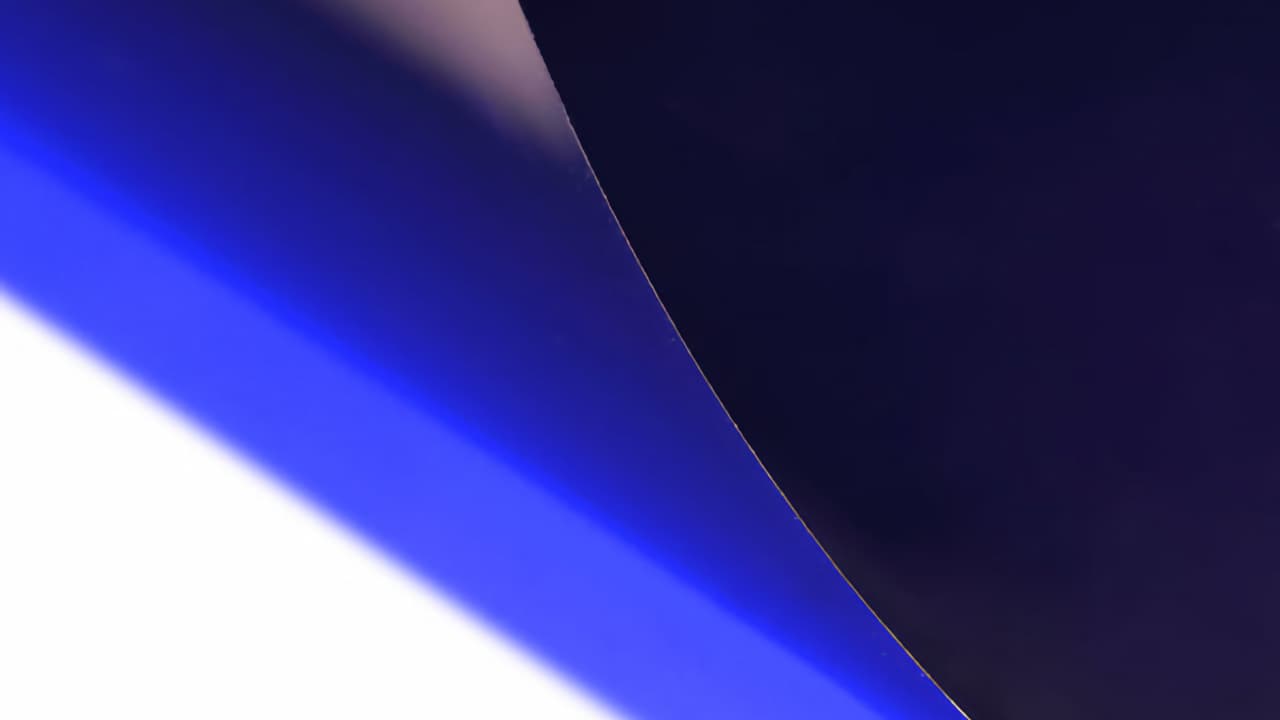
Exploring the evolution of LED lighting in cinematography, from red light solutions to the challenges of achieving deep blue and ultraviolet effects for more natural skin tones.
It’s easy to assume that the battle for really good lighting was pretty much over. The conversation is often about illuminating people, and people are mostly some variety of reddish-brown, so we’ve been mostly interested in making LEDs emit red light. Since the very first commercially available visible-light LEDs were red, it didn’t take long to solve the problem reasonably well.
Even before we’d started making full colour mixing lights, someone quickly figured out how to make a phosphor that glowed with a nice wide range of deep reds when illuminated by a blue LED. Then, it seemed even more like a solved problem. Now there are even lights which have both those things in them. As a result, they can do nice saturated cherry reds as well as lighting up blood, which is pretty much what we’re trying to do when we light skin.
And now we have people talking about multi-kilowatt lights which do these things. What more is there to do?
Well, in practice, it turns out that the grey-haired curmudgeons of cinematography might have had a point when they insisted on keying all the facial closeups with a tweenie older than most of the crew. It turns out that, sure, tungsten halogen lights emit lots of warm colours, which illuminates skin nicely. Crucially, though, they also emit a little bit of deep blue.
Which normal LEDs don’t. At all.
Take me to the Congo
For most practical purposes, an LED is monochromatic, and a blue one is not even a very deep blue, more a royal blue. Anyone who’s used an LED light that offers gel emulation, and has selected a number 181 Congo Blue, might have noticed that the result is a little underwhelming. Put an actual 181 gel on a tungsten-halogen light, and you get a vibrant indigo deep enough to start provoking blacklight-style fluorescence effects from someone’s dayglo highlighter pen. An HMI has a lot more deep blue to begin with. Put 181 on that, introduce a bit of mist, and the air practically vibrates.
However, if you ask most LEDs to emulate that, and you get… royal blue, because that’s what they have to give you.
Most of the time, though, we’re not actually that interested in recreating the opening from Belly. We’re interested in illuminating people, and people aren’t blue, and they don’t react to blue light. Everyone with glowing eyes in that Belly intro is wearing fluorescent contact lenses. That’s not a natural effect, because humans aren’t fluorescent… are they?
In point of fact, yes, a bit. Human skin is a complex structure. Collagen and elastin are both somewhat fluorescent, which is why people look slightly ashen under blacklights, even if they have very dark skin. The glow is a pale whitish-grey colour. It’s dim, but it contributes to the exquisite complexity of the optical effects that we sum up as “skin tone.”
Beyond blue

It’s not impossible to get LEDs which can go beyond royal blue. One early adopter was Zylight, which offered a UV-emitting variation on its F8 fresnel (above). To be fair, the word “ultraviolet” is a bit of a weasel term. It covers everything from light that’s almost visible blue, all the way to the stuff that risks skin cancer and beyond. The range of things we call “ultraviolet” is actually wider than all of visible light.
The emitters used in Zylight’s design, and essentially all beyond-blue LEDs today, are reasonably close to visible. Happily, they’re blue enough to provoke fluorescence effects in skin, and in clothes which have been laundered using a detergent which contains a blue dye to make them look whiter.
Until recently, this technology was too expensive for high-power LED lights, at least in comparison to an indicator light on a control panel. It’s especially difficult for designs that need to fit a lot of power in a tiny package to create a point source that suits a Gobo projector or Fresnel lens.
The result is still relatively expensive, which is why these LEDs are likely to be deployed in lights that are mostly expected to emit white light, often with trim controls for color temperature and tint. Manufacturers might call them indigo or violet, depending on exactly what the underlying devices can do.
So, it might be a while before colour-mixing lights start to have a “blacklight” option that has a higher power output, or a Congo Blue option which actually looks like Congo Blue. There are some pretty similar arguments to make about very deep red light, which is also not easy to get from LED technology.
There are tradeoffs of brightness and colour with different emitter configurations, but many lights now include six emitters, or even more. Still, if this is the last hill LED lighting has to climb, we’re at least beginning to climb it.
tl;dr
- LED lighting in cinematography has evolved from emitting red light to achieving deep blue and ultraviolet effects for natural skin tones.
- Tungsten halogen lights emit warm colors, including deep blue, which normal LEDs do not emit at all.
- Human skin has a fluorescent glow, which contributes to the complexity of skin tone and reacts to blue and ultraviolet light.
- LED technology has advanced to produce light beyond royal blue, including ultraviolet-emitting LEDs that can provoke fluorescence effects in skin and clothes.
Tags: Production Lighting


Comments